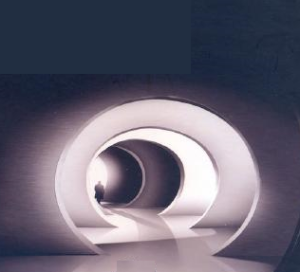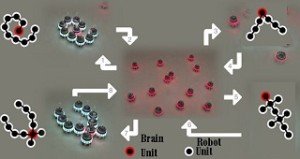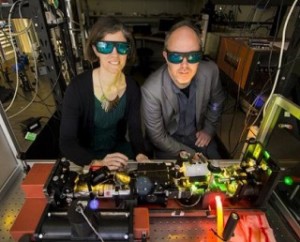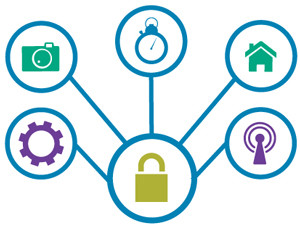
Arquivo para a ‘[:pt]Dispositivos[:en]Devices[:es]Dispositivos[:]’ Categoria
The future of thinking machines
We made a point of making the classifications (post) between cyborgues,  androids and humanoids, showing that the hybrids are still a fiction for some and a delirium for others, as our view is the point of singularity of Raymond Kurzweil.
androids and humanoids, showing that the hybrids are still a fiction for some and a delirium for others, as our view is the point of singularity of Raymond Kurzweil.
Points of singularity m (it is good to say technological, since there are others) would be that point where there would be a surpassing of biological human to a post-human technological, of silicon or even something more futuristic, photonic or neo-biological (biological chips, for example ).
Raymond Kurzweil’s definitions are clearer and more precise, he wrote in 1987 The Age of Intelligent Machines and then in an even greater delirium an update to The Age of Spiritual Machines where he seeks to find where the so-called Transcedent Man (documentary 2009), and then we can outline his ideas.
You can delineate your ideas in 4 points: technological evolution up to its definition of singularity is one of the tangible objectives of humanity (will be?) By exponential progression, the functionality of the human brain is quantifiable in terms of technology and can be built in a near future (but only functional); average advances can keep a significant amount of their generation alive enough for the increase in technology to pass human brain processing (one thing does not imply the other, could be done with future generations), and a point that is socially interesting that the theory of accelerated evolutions.
This theory says that the theory of accelerated change refers to the increase in the rate of technological innovation (and sometimes it may be accompanied by social and cultural evolution) and is always present in history, which may suggest faster and deeper change in future, although this is true how much accelerated depends on the historical perspective.
We define this evolution as the noosphere, a sphere of mind or spirit, based on the idea of John Searle, that the mental “real and ontologically irreducible” to the physical, and that technologies evolve and accelerate human growth but are separated by what Juergen Schmidhuber calls “uniqueness of the omega”, something at once similar and different from the omega of Gregory Chaitin, because it is not a number or a number, but what Teilhar Chadin (1916) defines in his noosphere as the beginning and end of the human , but wrapped in a connection of minds and spirits as if they were communicating vessels.
For Juergen Schmidhuber, the next Omega – 2040 (there was no film Blade Runner 2049) from his series Omega – 2 ^n human lives (n <10; human lives (n <10; a life – 80 years) about major stages of events would occur in human history.
He questioned the validity of such changes by suggesting that they merely reflect a general rule for “both the individual memory of the single human being and the collective memory of whole societies and their history books: constant amounts of memory space allocated to get exponentially greater, adjacent time slots more and more into the past, “and it is memory and not Moore’s law that speaks of the growth of digital memories.
His suggestion is that “the reason why there has never been a shortage of prophets predicting that the end is near – important events according to their own vision of the past always seem to accelerate exponentially,” so both ancient and modern prophecies are no longer that oracles that establish this reconnection between the “omega” of the beginning and end, announcing great changes and at the same time connected to them.
There is a very clear example of Jürgen Schmidhuber’s acceleration, given in Wurman’s book, “Information Anxiety” (1991), where he says that a person who read the New York Times for a year read more than the best of the men of the eighteenth and earlier centuries, then of course there is more reading today than in previous centuries, but thinking … need evolution.
Autonomous robots?
Autonomous robots are a denomination for those who are within the environmental limits, can achieve the desired goals (by humans or by tasks organized in an algorithm) in these unstructured environments without a human help, by this they are in certain levels.
limits, can achieve the desired goals (by humans or by tasks organized in an algorithm) in these unstructured environments without a human help, by this they are in certain levels.
For example, within a factory where mechanical tasks are performed, to avoid accidents, their geographic space is limited and deficient to detect the defect that can be fulfilled by a forged task, since a space robot should have fewer limits and be the most autonomous autonomous, for being without possibility of direct human action and having communication difficulties due to a distance.
The project called SWARM, funded by the European Union and we have already made a post, now has the first multi-robot system of autonomous assembly that has sensory-motor coordination observing similar robots around them, they will vary in shape and height in white according to a task and / or work environment.
A central “cerebral” central coordinating system, all of us, through a system called MNS (Mergeable Nervous System), and thus are reconfigured observing different capacities but combined by a single central controller.
They can also split up and perform self-repair tasks, eliminating defective body parts, including a brain unit with some defect, of course, one can define which are defeats and self-repairs.
In autonomous robots, learning and strategy according to the environment, what you can do with your autonomy increases, but for what you can print, the article is still not the case.
The current model has 10 units, and the authors point out without paper published in Nature Communications, claim that the Project is scalable, both in terms of computational resources for robotic control and time of reaction to stimulus, whithin the system.
Has the mind emerged from matter?
This question lies in the work of Berkeley’s philosopher, anthropologist and cognitive scientist Terrence Deacon, in Incomplete Nature: how mind emerges from matter (2013), where Deacon considers information a phenomenon whose existence is determined respectively by an essential absence, something like Not realized that may or may not be the accomplished one.
cognitive scientist Terrence Deacon, in Incomplete Nature: how mind emerges from matter (2013), where Deacon considers information a phenomenon whose existence is determined respectively by an essential absence, something like Not realized that may or may not be the accomplished one.
If in the 19th century the great paradigm was to admit the existence of energy and its relation to matter, now modified by Constantine Tsallis (see our post), the 20th century brings to us its difficulties in assimilating the existential unreality of information. A complete explanation of the real nature of information is such that it would be necessary to distinguish information from merely material or energetic relations which also require a paradigm shift, so a form / background alternation that we call this in-form-action in my blog would still be More fundamentally a counterintuitive vision than that demanded by energy (Deacon, 2013, p.373)
Deacon uses for his argument, several examples from biology and mathematics to justify his idea, essentially emerging from a nothingness, is not really new in philosophy and science, still less in logic and mathematics, but unlike Descartes Where the first certainty is the I, in modern mathematics the first certainty is the 0, the empty set and now with the digital, 0 and 1, that emerges a metamamatic as Gregory Chaitin wants, which we already discussed in another post.
The cardinal number model of the mathematician Von Neumann defines all numbers literally from scratch: there is the empty set. The empty set itself has an element: the empty set itself, Alain Turing and Claude Shannon idealized the machine, but it was von Neumann who built it, if we think the Mark I and Konrad Zuze’s machine were no more than electro calculators -mechanics. A mathematician connected to the theory of Sets, Ernst Zermelo, although he makes a different reasoning, also part of the zero to reach all the cardinals. Information is part of modern man, not only in the city, but now in the so-called Information Society, that we ourselves will produce it from situations where we identify that something is missing.
This appears to be the best approach to address the nature of information She is always something that is missing. As if at all times reality was wondering: now what is missing, and providing what it can. This idea is even known to us. Being proactive, efficient, organized, is always to have a preventive and proactive attitude towards possible situations.
It’s an anticipation. It is to detect what is lacking and to provide. According to Deacon, this logic permeates all reality. In addition to the abundant infosphere in which we stand, emerging information is a constant demand, whether through living beings or not.
Deacon claims the idea of mathematician and communication theorist Claude Shannon, who associated maximum entropy with minimal information and vice versa, bringing information to the origin of the order / disorder dichotomy, so dear to theories of complex systems, the mathematics of chaos and to the irreversible thermodynamics of the dissipative structures of Ilya Prigogini, Nobel Prize in Chemistry 1977, from where the ideas of Chaos and Complexity emerges.
Constantino Tsallis, Terrence W. Deacon and Gregory Chaitin has talks in EBICC Conference in São Paulo, Brazil.
DEACON, T. W. Incomplete Nature: the mind emerged from matter. 2013.
The quantum internet is coming
While 5G connections promise to be a reality in the year 2019, researchers  from Australia are moving towards building an internet based on the foundations of quantum laws. Researchers at the National University of Australia (ANU) published last Monday in Science Daily, a type of crystal structure reinforced with erbium material that can take advantage of quantum mechanical properties to make the entire World Network.
from Australia are moving towards building an internet based on the foundations of quantum laws. Researchers at the National University of Australia (ANU) published last Monday in Science Daily, a type of crystal structure reinforced with erbium material that can take advantage of quantum mechanical properties to make the entire World Network.
The group’s coordinator, Professor Matthew Sellars, said: “Efforts to build a quantum computer have often been described as the ’21st century space race’, but today’s computers were not aware of their potential until we internet, “and that this could unleash the” potential of future quantum computers. ” The result that was discredited a decade ago, now: “Seeing this result, it’s great to know that our focus was the right one,” Sellars said.
The bottleneck of computing is not so much the processing speed that continues to grow as slower storage time and growing linearly, as an old law called Moore’s law states, since a quantum memory is compatible with telecommunications, which is the challenge of researchers today. Researcher Rose Ahlefeld (photo with Sellars), who participates in the project, noted: “A telecommunications-compatible quantum memory is a vital component of a practical quantum internet,” and this possibility will be the quantum leap in the digital world.
The material built as the erbium is compatible with current optical fibers and in addition will be able to connect with many types of quantum computers, including silicon qubits in various prototypes and also at the Australian university
.
Smartphone recognizing surface
Researchers at this university have created a type of camera called SpeCam that can  recognize the surface that the smartphone is and set different tasks for it.
recognize the surface that the smartphone is and set different tasks for it.
For example, if the phone rings and you put it upside down on the laptop, it could send a message to the caller saying “sorry, I’m in a meeting” or put it in your pocket could suggest to another colleague.
SpeCam is actually a program that allows existing phones to use the camera’s function to recognize different materials to which the smartphones are exposed, linked to a database that recognizes the fabric and links it to a message.
The work was presented in the recent 19th. International Conference on Human-Computer Interaction by Mobile Devices and Services, ACM SIGHI MOBILEHCI 2017, Vienna Austria, on Wednesday, September 6 by researchers led by Aaron Quigley.
“This is an example of what we call Discrete Computing or discrete interaction, where subtle and subtle user actions can result in entirely new forms of interaction. , recognize materials, all surfaces around us become a screen for our imagination. ”
SpeCam cleverly uses the display / display on a smartphone as a multi-spectral light source and the front camera to capture the reflection of the material that has been placed face up.
SpeCam: Sensing Surface Color and Material with Front-Facing Camera of a Mobile Device” received an honorable mention award at MobileHCI, one of five such articles throughout the the program.
What are the best plans for clouds
We’ve gone through floppy disks, CDs, pendrives and now it’s cloud storage, there are good, medium services, but the great ones are still to come.
there are good, medium services, but the great ones are still to come.
Important detail check that when buying a tablet or notebook if it no longer has a cloud service available, most often fears the user or know how to use, is what is written as 25 GB of storage, may be more or less, but Which means lifelong storage, more secure than any other service.
If you put in the tip of the pencil, free services, you will find 5 good: Dropbox, OneDrive, Box, Google Drive and iCloud, but still have ADrive, Amazon, CloudDrive and SpiderOak services that are good, even taking free A little hand in his pocket.
The Box is one of the most reliable services in the world, being a well balanced option in terms of space and security, but like some competitors, the disadvantage is the incompatibility with the Linux system.
One of the most famous cloud storage services is also one of the most robust, Dropbox has little space for storage in the free plan.
The Google product, Google Drive has considerable storage space, syncs photos automatically, has quick features, is already installed on almost all Androids and Chromebooks, making it an easy option for those who already use other services of the company.
These other plans such as ADrive came to gain prominence in recent years when it offered high storage space without cost gained market, but then it only allowed subscription plans
IoT and data security
Many aspects of data security have been developed, but there is a maxim of computing that states that no system is totally secure, and if we anticipate an exponential growth of connections to the Internet of Things, it is a fact that the security problem also has a growth In this proportion.
that states that no system is totally secure, and if we anticipate an exponential growth of connections to the Internet of Things, it is a fact that the security problem also has a growth In this proportion.
While the world of IoT has arrived (smartphones, watches, TVs, cars, glasses and other gadgets, we can say that there is a really safe IoT platform with simple operations.
To the experts, one of these basic security features is data encryption, but it must be added to the Big Data treatment, since this for the current data volume is almost indispensable, with IoT being compulsory.
IoT devices transact tons of data, cryptography is already an obvious aspect of these data, but it is still rarely used, let alone if we think from end to end, ie from producer to consumer of data, and so IoT is more gloomy.
With the advancements in quantum computing, cryptography may also not be enough to protect vital data, since quantum computers can discover cryptographic keys even faster, and algorithms though efficient now, there is no totally secure, cryptographic keys with Use of quantum computing will be more quickly opened, and while most hackers do not have access to this level of computing we can be sure, but for how long?
We must begin by rethinking two issues, BigData’s data processing and quantum-computing cryptographic keys before these features are in the hands of hackers.
Privacy data, often vital for certain systems, are and will be in check more and more
TOM TOM go Brasil
The Tom Tom GPS is already famous all over Brazil, and already had  a version for many countries around the world now, now has come Tom Tom Go Brazil, at least for now free and better than Waze, because it works even if your phone is off -line and update all maps online without needing that: “update and gps”.
a version for many countries around the world now, now has come Tom Tom Go Brazil, at least for now free and better than Waze, because it works even if your phone is off -line and update all maps online without needing that: “update and gps”.
The application already works for Androids devices and is promising soon for brazilian HiPhones, and enters a direct competition with Waze, the popular application for transit here.
The driver can check the traffic conditions on various routes; know where speed radar in many cases identifying mobile speed radars, such as maximum speed of the route, but the most interesting option to download several diverse maps.
Although this is interesting, it gives some balls, for example, Ceará is in the Northeast region, but it is pointed as North, so to download make sure for sure in which region is according to Tom Tom.
It has interesting services like telling friends the arrival time, it will calculate and redo the schedule according to the traffic and stops, ideal for caronistas and people who love to stop for the snack.
Until July 13 (because of this date), the “Get Tom Tom GPS Navigation ‘application can be downloaded for free, after this date it will cost $ 1, about 3 brazilian reais.
The bad news is that after the testing period, the user has to pay US $ 15 a year to use the licenses of the maps, or it will be outdated, and it is unknown if the service can be cut.
Touchless beyond IoT
In addition to devices and sensors that allow the Internet of Things (IoT), touchless technology  predicts that anything touchable can trigger devices and controls in our environment, is the fiction of the 2002 Minority Report, now almost within reach.
predicts that anything touchable can trigger devices and controls in our environment, is the fiction of the 2002 Minority Report, now almost within reach.
In the film John Anderton related to databases through the holographic movement of hands with gestures and clicking on the air choosing elements for interaction.
As we move forward, cloud storage and intelligence linked to the data, sensing through gestures, it will soon be possible to communicate without a keyboard, without a mouse or sensors, just if we have some “wearable” equipment in our body: a clock , A bracelet, or even clothing that has Wifi or Bluetooth communication.
What is missing from the movie Minority Report are the holographic environments, how do we go about triggering them? Still the technology has advanced little in this direction, because they would be thousands of pixels (actually voxels, because they will be volumetric pixels) to be processed.
What is already available are projections on surfaces and cameras that capture the movements on these surfaces where we can touch switch images, and projected virtual control devices and camera captures, the future is there.
They will say that it is more of a barbarity, but as soon as the barbarians are launched they invade the market.
Let’s talk about the technologies that are already available.
The news of Motorola Razr is pitfail
The new model of Motorola Mobile, which had been sold to Google and now is Lenovo, is the Motorola Mobi, in fact it is a model called Motorola Mod.
Motorola Mobi, in fact it is a model called Motorola Mod.
Among the untrue about the Mod, any was presented in TecMundo, one is that it would have a cover that could also serve as wireless charger, extra battery and an LED giving different colors for the actions actions of the device, another fantasy is that could such Mod Razr , Would have a solar panel and a “walkie-talkie”.
What has actually been a contest including models to reach the market, it is not impossible that has some of the above features, but even if it is called Razr, there will be nothing nostalgic about the model, because technology like novelty.
While we are waiting for some news, we have already posted the Moto G5 models and the results indicate that they are gaining market, of course with specifications are Moto G4 Plus, but many people are still in doubt if it is worth because of the price of this fashion model.

